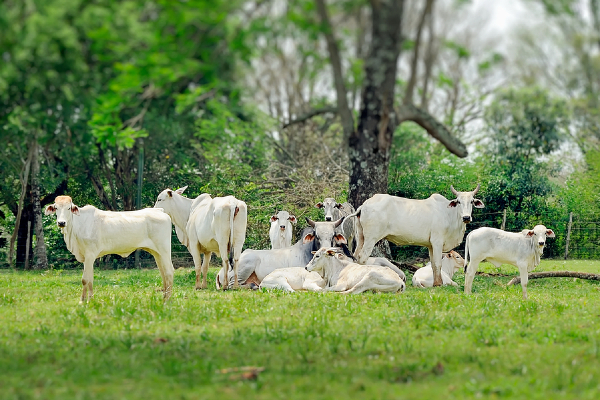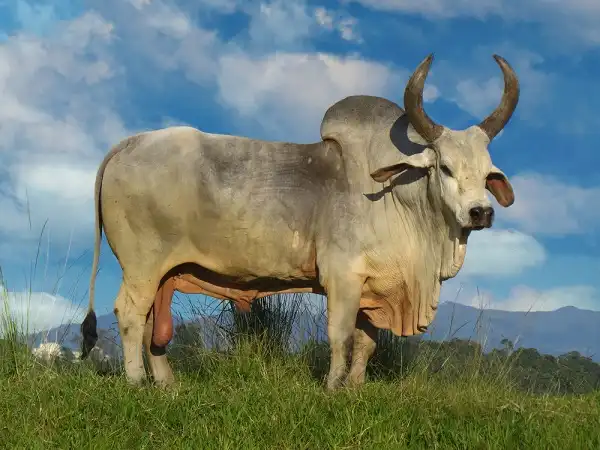Zebu are a unique breed of cattle that is found mainly in Africa and Asia. They are known for their distinctive head, which is larger than most other breeds of cattle. Zebu are adaptable animals that can thrive in a variety of climates and conditions. They are used for meat, milk, and draft power in many parts of the world.

Zebu Description
Zebus are large, ox-like animals with distinctive humps on their backs. They vary widely in color and size, with some individuals reaching heights of up to six feet or more at the shoulder. Zebus are generally docile and are known for their mild temperaments, making them ideal farm animals. They are also exceptionally hardy, able to survive in a wide range of climates and conditions. In addition to their agricultural uses, Zebu have also been used as work animals in other contexts, such as hauling supplies over rough terrain and providing transportation services. Overall, Zebu make excellent livestock due to their strength, agility, and adaptability, making them an invaluable asset on any farm or ranch.
Zebu Habitat
Zebu are large, humpbacked cattle that are native to the grasslands and savannas of Africa and Asia. Zebu are well adapted to the hot, arid conditions of these habitats, thanks to their long, droopy ears that help to keep them cool and their hooves that can spread out on soft ground, providing better traction in difficult terrain. Zebu also tend to be active during the cooler parts of the day, spending much of their time grazing on low-growing shrubs. Given their natural range and behaviors, zebu thrive in grassland habitats characterized by rolling plains dotted with shrubs and thickets. In addition to providing the right climate for zebu to thrive, these habitats are also home to a wide array of other animals that zebu may interact with or compete with for food and territory. Overall, zebu make excellent grazers in scorching hot environments due to their unique adaptations and behaviors.
Zebu Diet
Zebu are well adapted to the hot, tropical climates where they originate, and their diet plays an important role in this. Zebu typically graze on a variety of grasses and other plants, which helps to keep them cool and provides them with essential nutrients. In addition, Zebu are able to convert poorer-quality grasses into nutritious milk, making them an important food source for both humans and wildlife. As the world’s demand for beef continues to grow, the Zebu’s ability to thrive in hot, difficult environments makes it an increasingly valuable breed of cattle.
Zebu Size
Zebu size refers to the physical characteristics of Zebu cattle, particularly their height and weight. Zebu cattle are a species native to parts of Asia and Africa, and they are well known for their distinctive body shape and long horns. These animals vary greatly in size, with some individuals growing to over six feet tall and weighing several hundred pounds. Their size has a number of impacts on Zebu populations, particularly with regard to their health and ability to adapt to different environments. For example, smaller Zebus may be more susceptible to cold temperatures or drought, while larger Zebus may have difficulty grazing in dense vegetation. Overall, Zebu size is an important trait that can affect many aspects of these animals’ lives.

Zebu Lifespan
Zebus are a type of cattle that are known for their long lifespan. Zebus are relatively hardy animals, and they can thrive in a variety of different conditions. In fact, many Zebu farms have been able to raise Zebu calves to full adulthood, even under less than ideal circumstances. This longevity is largely due to the robust health of Zebu cows and bulls. Zebus are more resistant than other breeds to common diseases and infections, which allows them to stay strong and vital well into old age. Thus, it is clear that Zebus can be a valuable addition to any farm or herd, as they will help to ensure your farm remains productive for years to come.
Zebu Behavior
Zebus are naturally social, spending much of their time interacting with other herd members. Zebus display varied behaviors depending on their age and sex, engaging in interactive activities such as fighting and grazing alongside one another. They also communicate using a wide range of vocalizations, from low mooing sounds to high-pitched whistles. Whether they are competing or bonding with one another, zebus always seem to be engaged in some form of behavior that truly exemplifies the nature of these unique animals.

Zebu Speed
Zebu are a type of cattle originally native to Asia that have been selectively bred over time to exhibit extremely fast speeds. Zebu are highly athletic animals, capable of reaching sprinting speeds of up to 60 miles per hour. This superior speed allows zebu to outrun predators and cover large distances quickly. Their athleticism also gives them incredible stamina, allowing them to maintain high speeds for long periods of time without tiring. Thanks to their unique abilities, zebus are well-suited for a variety of purposes, including racing, herding, and other forms of work or recreation. Whether running across the open plains or working on a ranch, zebus truly exemplify how speed can be used to achieve great things.
Zebu Hunting
Zebu hunting is a popular practice among indigenous peoples native to the tropical forests of Southeast Asia, Central America, and Brazil. Zebus are large, placid cattle with thick coats that grow long, shaggy manes around their necks. Zebus are prized for their meat, which is said to be particularly tender and flavorful. Due to the popularity of zebu hunting among indigenous communities, many local governments have enacted restrictions on this practice in order to protect these wild animals as a valued source of food. However, despite these regulations, many hunters continue to pursue this activity due to its cultural importance and economic value. Zebu hunting not only provides an essential source of food for native communities living in remote areas, but it also provides much-needed income through the sale of meat and hides. As such, it remains an important cultural tradition that continues to thrive today.

Conclusion
The Zebu cattle are a breed of cattle that is well-adapted to the tropics. They are able to tolerate high temperatures and humidity, and they have a resistance to disease. Their meat is also leaner than other breeds of beef cattle, making it a healthier option for consumers. If you are looking for a healthy, sustainable source of beef, then the Zebu cattle may be the right choice for you.
Frequently Asked Question

